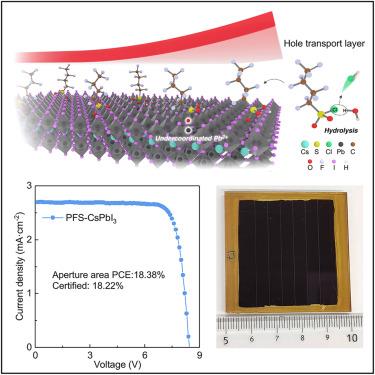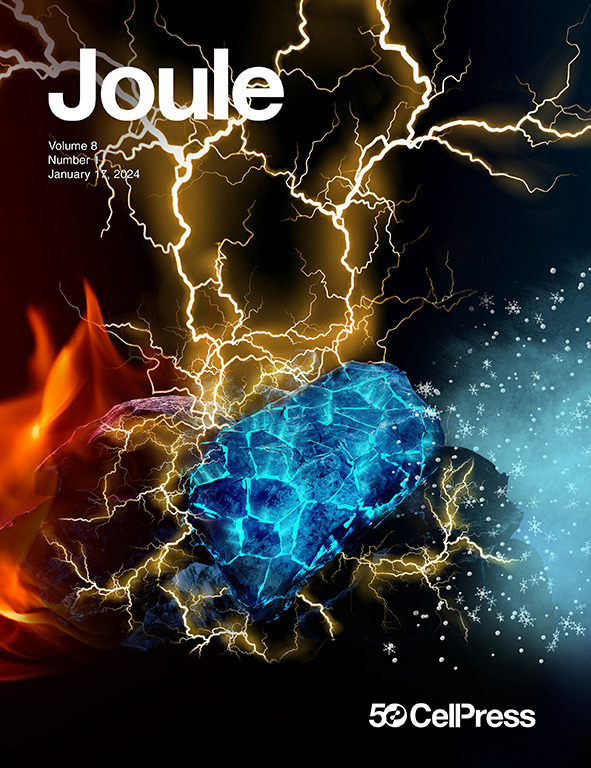CsPbI3 perovskite solar module with certified aperture area efficiency >18% based on ambient-moisture-assisted surface hydrolysis
IF 38.6
1区 材料科学
Q1 CHEMISTRY, PHYSICAL
引用次数: 0
Abstract
Humidity can accelerate degradation by promoting phase transitions and enhancing the defect generation in perovskites. This poses a significant challenge for the upscaling of perovskite solar modules under ambient conditions, especially for moisture-sensitive inorganic CsPbI3 perovskite. Herein, we report an environmental moisture-induced chemical passivation of the CsPbI3 perovskite surface by the hydrolysis of perfluorobutanesulfonyl chloride (PFSC). The in situ generated perfluorobutanesulfonic acid (PFS) effectively reduces defect density and improves the interfacial contact, leading to CsPbI3-based devices with suppressed non-radiative recombination losses. Our in situ surface-modified PFS-CsPbI3 perovskite solar modules with an aperture area of 12.82 cm2 deliver a state-of-the-art certified aperture area efficiency of 18.22%.

基于环境湿度辅助表面水解的掺锑三氧化锡(CsPbI3)过氧化物太阳能模块,经认证的开孔面积效率大于 18
湿度会促进过氧化物晶相转变并增加缺陷的产生,从而加速降解。这给我们带来了巨大的挑战。
本文章由计算机程序翻译,如有差异,请以英文原文为准。
求助全文
约1分钟内获得全文
求助全文
来源期刊

Joule
Energy-General Energy
CiteScore
53.10
自引率
2.00%
发文量
198
期刊介绍:
Joule is a sister journal to Cell that focuses on research, analysis, and ideas related to sustainable energy. It aims to address the global challenge of the need for more sustainable energy solutions. Joule is a forward-looking journal that bridges disciplines and scales of energy research. It connects researchers and analysts working on scientific, technical, economic, policy, and social challenges related to sustainable energy. The journal covers a wide range of energy research, from fundamental laboratory studies on energy conversion and storage to global-level analysis. Joule aims to highlight and amplify the implications, challenges, and opportunities of novel energy research for different groups in the field.
 求助内容:
求助内容: 应助结果提醒方式:
应助结果提醒方式:


